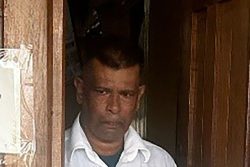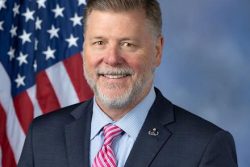Just a few words to finish off what I was saying last Sunday about ornamental pools in the garden. Once we have got to the stage where the water is going into the pond, and the edging of stone slabs or turf has been laid, the next question is what to put into the pond. Better than any plants for the garden pool the water lily gives the best value for your money, and there are scores of varieties from which to choose.
Most gardeners plant their water lilies in baskets lined with sacking or netting and filled with compost. In order to stop the compost floating away or being disturbed by fish, it is always wise to finish off with a good layer of stones on the top to make sure that nothing is disturbed. Fish can and do muddy the water.
Containers of water lilies should be introduced gradually into deeper water, and this is done by first placing them on breeze blocks to keep them near to the surface. As the leaves develop, the baskets are gradually lowered until at last they are sitting on the base of the pond and the leaves are at or very  near to the surface. Water lilies and any other plants you put into the water take a lot of oxygen from it, so you should limit the number of lilies. The rule of thumb is that you should not have more than a third of the surface of the pool covered by plants when fully grown. If not, you can expect to see fish floating on the surface before long. If you have fish you must make sure they get oxygen, even if it means cutting leaves off your plants or even reducing their number do it. Fish numbers can also be reduced by birds. I have seen the flash of kingfishers on trenches and also small water birds standing on lily leaves and taking small fishes as well. In the garden pond the main benefit of having a small fish population is that they will feed on mosquito larvae. Other uninvited visitors will certainly include frogs, toads, snails and the beautiful dragon or pond flies which will enchant you as they dance over the water. Snails will often reduce your lily leaves to skeletons. Frogs and toads will lay millions of eggs which will need scooping out as will pond weed or blanket weed which will cover the entire surface if allowed to grow unrestricted.
near to the surface. Water lilies and any other plants you put into the water take a lot of oxygen from it, so you should limit the number of lilies. The rule of thumb is that you should not have more than a third of the surface of the pool covered by plants when fully grown. If not, you can expect to see fish floating on the surface before long. If you have fish you must make sure they get oxygen, even if it means cutting leaves off your plants or even reducing their number do it. Fish numbers can also be reduced by birds. I have seen the flash of kingfishers on trenches and also small water birds standing on lily leaves and taking small fishes as well. In the garden pond the main benefit of having a small fish population is that they will feed on mosquito larvae. Other uninvited visitors will certainly include frogs, toads, snails and the beautiful dragon or pond flies which will enchant you as they dance over the water. Snails will often reduce your lily leaves to skeletons. Frogs and toads will lay millions of eggs which will need scooping out as will pond weed or blanket weed which will cover the entire surface if allowed to grow unrestricted.
Finally, shortly after completion your pond will almost certainly turn green. They all do. If you have the right depth of water (about 18 inches) the green colouring will disappear, and you will be able to see life under the surface. The ordinary common goldfish are my favourite pond fish. Brilliantly coloured they will happily consume mosquito larvae.
Mosquitoes need water in which to breed. Drains and trenches should be sprayed with a larvicide such as kerosene which will leave a thin film on the water surface which will prevent the larvae developing. I certainly found this effective for treating the drains around the house.
Until next week may your God go with you wherever you may be.









